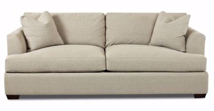Shop By Department
CUSTOM FURNITURE
GET YOUR LOOK,
YOUR WAY.
Personalize your living room, bedroom, and dining room with custom furniture from Furniture of Dalton. Choose from thousands of fabric and leather options, along with a large selection of wood stains, to create the furniture of your dreams.
VIRTUAL TOUR
EXPLORE OUR STORE
We invite you to take a 360-degree virtual tour of our 120,000 square foot showroom. You can “walk” through every aisle and zoom in to get a close-up look of your favorite pieces, from sofas to dining tables to bed frames.
See What people are saying

This is a wonderful place to buy furniture. Selection and prices are good.
PLUS, Customer Service is fantastic! We purchased a couch. A couple months later, it started squeaking when you sat in it. They contacted the manufacturer, who sent someone out to look at it. That person determined it was badly made and the manufacturer said they would replace it. The replacement took a long time since it was during Covid, but Donna at Furniture of Dalton called me countless times with updates. She was just wonderful!
When the couch arrived, they even sent new decorative pillows. Fantastic business!!!!
Diana T. – Canton, GA

Great place, amazing selection of furniture at wonderful prices! We have been looking everywhere for leather sofas in Atlanta for months, no luck. So we drove up to the Furniture of Dalton (part of Carpets of Dalton). Huge, huge selection of sofas, grouped by selection, which was like going to 5+ stores here in Atlanta, but they had inventory and much better prices. They also delivered, like a white glove treatment, right to my den. We will return to Furniture of Dalton for any furniture need in the future. Wonderful Quality Furniture!
Anne J. – Atlanta, GA

This furniture store has a lot to offer. When I say a lot, I mean it is ENORMOUS! It has brand name items as well as marked down, off-the-floor items. It also has a wide range of styles from rustic farmhouse to modern. So far, I have purchased a unique entertainment center, made from reclaimed wood and an amazing dining table. There is so much to choose from so be sure to plan a little time to look around. Customer service has a strong point. Don has been really helpful and is someone I would recommend asking for. The guys in the shipping department were also helpful and careful with our purchases. Overall, this place has a lot going for it. I would recommend it for sure
Keith F. – Canton, GA

We recently came here due to a commercial we saw during the morning news that advertised a massive sale. We were looking for a tv stand or accent cabinet that doubled as a tv stand. Upon arrival, we entered the store and were immediately overwhelmed at the sheer size. It's so large there's literally a 3 bedroom house in the back that is fully furnished WITH BEER AND WINE ON OFFER...and that doesn't even begin to fill the space. There is furniture at all prices levels so anyone can find something here. We were greeted by Don Rosellini and asked what we were looking for and we just said were looking around at nothing in particular. He told us to look around and let him know if we needed help. As we wondered around the massive store, Don popped up every now and then to make sure we were taken care and not in want of anything. We eventually found a great accent cabinet but needed to take a measurement just to make sure our new tv would fit on it.
Dominic E. – Kennesaw, GA

Wow! I'm doing a remodel and needed high-end appliances and will be replacing all the furniture as well. I had heard about this place, and even though it's a 2 hour drive from my house, it was well worth it! The selection was unbelievable! The prices are reasonable for the quality that they offer. They have such a wide selection! The staff was super friendly and very easy to work with! Highly recommend!!!!
Amber M. – Murfreesboro, TN

We recently upgraded one of our bedrooms to accommodate the "growing needs" of our grandkids, adding adult-long twin beds with storage drawers. It turns out that extra-long twin beds with storage drawers aren't in many inventories. David R. the salesperson at Furniture of Dalton made it happen by contacting the manufacturer for a special order. Now because we bought a set, we took the pieces that were in inventory and waited on the rest of the order. There is an $85 delivery fee per delivery. So if you want to avoid that cost, have a truck or trailer handy as you can pick up the furniture there and the warehouse staff is a bunch of good guys very willing to help. Also a shout out to Becky and Lisa at the pick-up window as they tracked the second part of the order and let us know when it was available for pickup. A nice experience all the way around. Recommended.
Kevin F. – Resaca, GA
TIPS AND TRENDS
TIPS AND TRENDS
BE THE FIRST TO HEAR ABOUT OUR SALES
SIGN UP FOR OUR
NEWSLETTER
icon-car
icon-car




































































